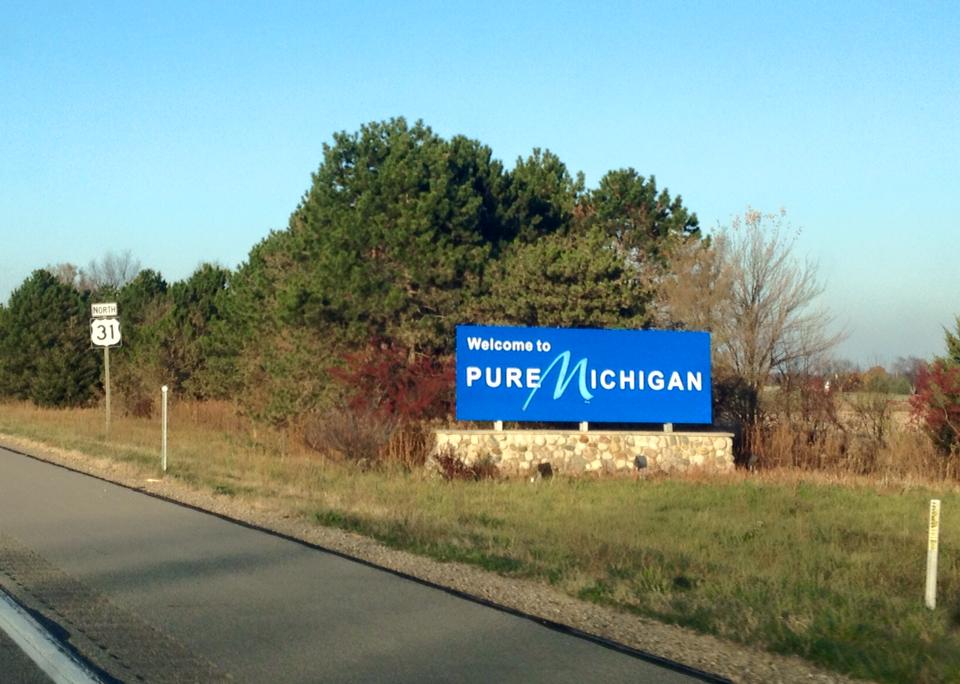Entérate
History in West Michigan
West Michigan – West Michigan is full of rich, vibrant history, and many opportunities to get out and experience it. Experiencing history, rather than simply reading it out of a textbook, provides a far richer understanding of the people, places, and experiences of the area. We’ve collected some of our favorite ways for you to experience the varied history of the region, from living history parks to visiting the seat of Michigan’s only monarchy to tasting ice cream from a 120 year old company.
The Michigan Historical Museum in Lansing surrounds visitors with Michigan history from prehistoric times through the late twentieth century. Exhibits include a three-story Michigan relief map, a copper mine, one-room schoolhouse and more. The State Archives of Michigan is also located in the architecturally inspiring Michigan Library and Historical Center complex. The Michigan Historical Museum offers five levels of permanent and changing exhibits that tell the story of Michigan’s past from precontact through the late 20th century. Exhibits include interactive computers, audio-visual presentations and hands-on elements. Plan to allow at least 90 minutes for your visit.
Tour a restored WWII Submarine, a Prohibition-Era Coast Guard Cutter and the Naval Museum at the USS Silversides Submarine Museum in Muskegon. This is a wonderful opportunity to experience what it was really like to sail a sub trolling the waters of the South Pacific 60-plus years ago. Named for a small fish of the same name, the Silversides once slid beneath the surface of some of the most dangerous waters in the world. You can walk the deck topside as well as the major internal compartments below deck. Keep an eye on their calendar for special lectures, classes and performances, too!
The Lakeshore Museum Center is a fun and fascinating museum which preserves and interprets through exhibits, education, and programs the natural and cultural history of Muskegon County. Take a 400 million year journey that explores the prehistoric plants and animals of Michigan’s past, or get pulled into the Science Center where everyone can learn about simple science through hands-on activities. Some of their permanent exhibits include, “Coming to the Lakes” featuring a life-sized mastodon, fur trader’s cabin and tools used during the lumbering era! The “Habitats Gallery” tells of native plants and animals.
Michigan’s Heritage Park is located in Whitehall, and is the newest addition to the Lakeshore Museum Center. Your tour of the park will take you through 10,000 years of Michigan History in a natural woodland setting in northern Muskegon County. Experience daily life in a Native American Wigwam Village. Interact with a fur trader stocking his shelves in the Fur Trade Post where you can participate in the trade. In the Settlers Cabin, learn about the life of early settlers and help with daily chores. Visit with Civil War Soldiers in their winter camp and hear about the dangers in camp. Stretch out on a bunk in the Lumber Shanty and learn what “small game in the camp” means. Find out what it took to put dinner on the table in the Farmhouse and learn what the Civilian Conservation Corps did in Michigan.
Highlights of the Coopersville Area Historical Society Museum include extensive railroad and interurban train displays, a sawmill exhibit circled by a model railroad running through logging territory, an early schoolroom, household furnishings and business displays, among which is an extensive recreation of an early local drugstore. Also featured is the Del Shannon monument and exhibit which commemorate the life and career of Coopersville’s native son who gained international fame in the 1960’s as a recording artist and songwriter. A Lincoln log activity area, along with other exhibits, is popular with younger visitors. The Museum’s collections are enhanced by the quaint and nostalgic atmosphere of its two buildings. The main museum building is a Michigan Historic Site and on the National Register of Historic Places. The charming brick structure was once a depot and substation for the area’s electric powered interurban rail line, the Grand Rapids, Grand Haven & Muskegon Railway, which ran from 1902-28. A rare passenger car from the railway, Car #8 – Merlin, sits beside the building where it once made many daily stops. The car is undergoing stages of restoration. Adjoining the former depot is the rustically designed Sawmill & Early Settlers Building which houses exhibits reminiscent of early settlement days.
Built in 1895, the Henderson Castle in Kalamazoo is a Queen Anne style home which is listed on The National Register of Historic Places. It has been featured in literature & national television, and is one of Kalamazoo’s most treasured historical landmarks. Be sure not to miss this gem of living history with a VIP Legacy Tour! Explore all floors of the Castle, including the scenic rooftop deck, the professional basement kitchen, and everything in between! Visit areas on the estate not normally seen by guests, including a trip to the vineyards & wine cave. The tour concludes across W. Main St. for a final view of the Castle from the Hendersons’ final resting place.
Located at the tip of the Leelanau Peninsula near the village of Northport, the Grand Traverse Lighthouseis one of the oldest lighthouses on the Great Lakes, and guided ships through the northern entrance to the Manitou Passage for 150 years. Today it is a museum surrounded by a picturesque state park where visitors can envision the once-isolated life of lighthouse keepers and their families, with extensive exhibits and period furnishings from the 1920s and 1930s. Its popular “volunteer lighthouse keeper” program provides an opportunity to live in the lighthouse, carrying on routine maintenance and answering the questions of its frequent visitors.
The former home of the Northern Michigan Asylum in Traverse City is now being redeveloped into a unique “village” of shops, restaurants (including Left Foot Charley winery), apartments and galleries in what may be the country’s largest historic re-use project. Developers are preserving both the castle-like 19th century buildings that once housed staff and patients, as well as the 480-acre wooded campus that surrounds them – now a favorite place for hikers and cyclists. But visitors are still curious about the secret, spooky places in those lovely old buildings, and they’ve been so insistent that the Commons now conducts guided historic tours into those areas. Visitors who can’t handle the exercise of a walking tour can even sign up for guided bus tours of the former asylum.
Michigan Legacy Art Park at Crystal Mountain Resort inspires awareness, appreciation and passion for Michigan’s history, culture and environment through the arts. Taken at a leisurely pace with moments for reflection, a hike through the Art Park typically lasts between 90 minutes and two hours and covers nearly 2 miles of trails. Along your hike, you will discover 47 sculptures, 31 poetry stones and an area of student work. Interpretive signs will help you grasp the meaning of the works. Be sure to pick up a trail map in the desk in front of the Visitors Service Center near the trailhead.
Treat your family to nearly 100 years of history at Castle Farms of Charlevoix. Inspired by French castles, Castle Farms was built in 1918 as a model farm. Closed in 1927, the beautiful stone buildings fell into disrepair. In later years, the Castle served as an artist’s mecca, and also rock n’roll central, with performances by 100 different rock groups. A restoration begun in 2001 completed the Castle’s transformation. Tours include viewing displays of antique toys, castles, royalty items, and WWI museum. Train buffs and kids of all ages will love the indoor train displays. Open year round, Castle Farms is a spectacular piece of Michigan history to explore.
St. Julian, the state’s oldest and most-awarded winery, was established in Windsor in 1921 during Prohibition. Rampant bootlegging across the Detroit River allowed Michiganders to enjoy the wines since the beginning. After the repeal of Prohibition, the winery relocated to Michigan, and today it thrives in southwest Michigan in Paw Paw. St. Julian founder, Mariano Meconi, moved from Italy in 1908, and found a way to transport grapes from California to sell to other Italians in the area. Too optimistic about the quantity of grapes one year, Mariano made wine from the excess to avoid wasting them, igniting his passion for winemaking. Dave Braganini, who started at the winery in 1973, has carried on his grandfather’s spirit in the winemaking business. Today, as a third and fourth run family company, wine is not only a family tradition but also a passion.
For over 100 years, Schuler’s Restaurant & Pub in downtown Marshall has kept it in the family – and beaten the odds. How rare is this achievement? According to Family Business Review more than 30 percent of all family-owned businesses survive into the second generation. Twelve percent will still be viable into the third generation, with three percent of all family businesses operating at the fourth-generation level and beyond. Schuler’s, a four-generation, family-owned restaurant in Southwest Michigan is an institution. Schuler’s attributes its longevity to the foresight of our founder and the succeeding family members who have used their entrepreneurial skills to build a 100-year tradition of hospitality and fine dining. In a challenging economy and changing marketplace, the iconic restaurant continues to thrive while evolving with the times. Great food and hospitality are critical. “We are always looking for something fresh, taking the best of the past and blending it with contemporary trends and tastes,” says third-generation owner Hans Schuler. “Schuler’s remains dedicated to reinvesting in the business and supporting the community in which we operate.”
Started in 1895 as a farmers’ cooperative, the Holland-based Hudsonville Creamery & Ice Cream is the largest manufacturer of branded ice cream in Michigan. Nearly 90 ago, in 1926, the company was located in Burnips—in north-central Allegan County. Four of the six original flavors remain in the company’s portfolio: vanilla, chocolate, strawberry and butter pecan (orange pineapple and Tootie Fruitie since been discontinued). Today, this Midwest company has been producing its creamy, delicious ice cream – using many of its original flavors, while at the same time creating refreshing new recipes inspired by the Great Lakes. A recent partnership with Travel Michigan and the Pure Michigan brand has resulted in a plethora of flavors that give a nod to the agricultural industry here in the Great Lakes State. Current Limited Edition Flavors include Pumpkin Pie, Pure Michigan Salted Caramel Apple and Pure Michigan Winter Campfire. Year-round offerings such as Sleeping Bear Dunes Bear Hug, Mackinac Island Fudge, Grand Traverse Bay Cherry Fudge and Michigan Deer Traxx, among others.
Have you ever explored the rich history of Michigan’s Emerald Isle—Beaver Island? Traditionally a warm-weather destination, this Irish-influenced island was once home to Michigan’s only monarchy. Mormon leader James Strang declared himself king of this island—the largest inhabited island in the contiguous United States—in 1850. The Strangites flourished under the King’s leadership and he became a political power not only in the region. Strang himself was elected to the Michigan House of Representatives in 1853 and again in 1855. He also founded the first Northern Michigan newspaper—the Northern Islander. Strang’s reign was not favorable among all, and over time hostility grew. In 1856, a plot against Strang resulted in him being shot—injuries he would later die from, on July 9 of that year. Today, Beaver Island celebrates not only its Mormon heritage but a thriving Irish culture. The island itself offers countless nature-based activities such as hiking, biking, bird watching, kayaking and star gazing. Beaver Island lies approximately 32 miles west of Charlevoix and is accessible air or boat—via the Beaver Island Boat Company.
The next time you vacation in South Haven at Sleepy Hollow Resort, you’ll be able to find a new appreciation for the resort through its varied past. In 1888 Joshua Smith, a professional photographer from Chicago, bought the property for $2,800 and set about creating a new house, barn and a 7,000 fish trout pond. Smith, who originally hailed from upstate New York and was a friend of the author Washington Irving, decided to name the grounds “Sleepy Hollow.” Guests from Chicago came by train and boat and were transported from town by a horse drawn colorful omnibus covered with a colorful canopy top. The next owner was Mr. Edward Gray, a foresighted man who was influenced by the art deco architecture used in The Century of Progress 1933 Chicago Fair, and he redesigned the Resort with this style in mind. His cottages offered stainless steel sinks, modern electric kitchens, full baths with showers and inner spring mattresses of a new design. In addition to shuffleboard, tennis, handball courts and beautiful flowerbeds he had indeed made Sleepy Hollow a 30-acre estate of quiet splendor. Edward Gray was an amateur violinist and because of his love for classical music, he constructed a music tower that emitted daily-recorded afternoon concerts. In the early 1950’s he added an Olympic style heated swimming pool, which was received with great enthusiasm. In the 1960’s and ’70’s Sleepy Hollow Resort was now one of the premier family vacationing spots. A public restaurant opened on the grounds. In the late 70’s the Gray family gradually relinquished their complete ownership and the resort became a condominium association with all the units now privately owned.
On the search for more history in West Michigan?
Get your history fix with a visit to the below locations to experience a step back in time.
- Gerald R. Ford Presidential Museum, Grand Rapids
- Gerber Guest House, Fremont
- Harbor Springs Area Historical Society
- Historic White Pine Village, Ludington
- Historical Association of South Haven
- Holland Museum, Holland
- Liberty Hyde Bailey Museum, South Haven
- Michigan Maritime Museum, South Haven
- Michigan Flywheelers Museum, South Haven
- Music House Museum, Acme
- Point Betsie Lighthouse, Frankfort
- Port of Ludington Maritime Museum, Ludington
- Silver Beach Carousel, St. Joseph
- USS LST 393, Muskegon
Comments


















